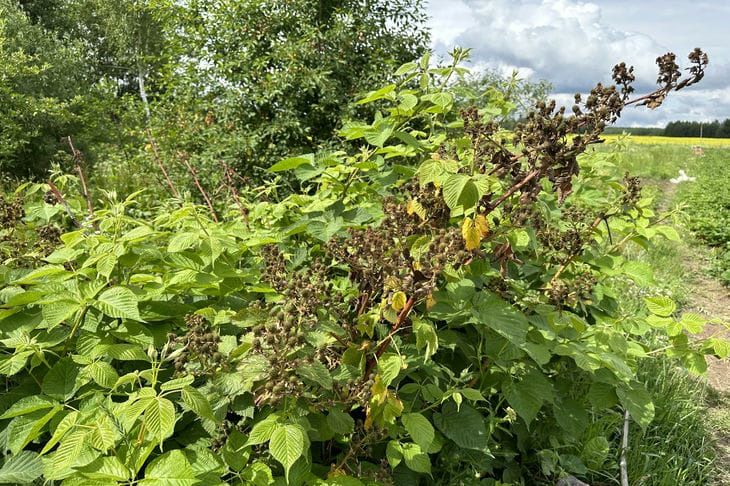How to stop raspberries from growing too big: secrets of experienced gardeners for controlling berry bushes
Raspberries are a favorite berry of many people, but their ability to grow quickly can be a real problem for gardeners.
Uncontrolled spread of raspberries can take over an entire area, displacing other crops.
Experienced gardeners share proven methods for containing this aggressive berry.
Understanding Raspberry Biology
To effectively control raspberry overgrowth, it is important to understand its biology. Raspberries reproduce in two ways: by root suckers and by seeds.
Root suckers are the main method of propagation, with new shoots emerging from the underground parts of the plant. It is this mechanism that makes raspberries so "invasive".

Choosing the Right Landing Site
Choosing the right location for planting raspberries can make it much easier to control their growth.
It is recommended to allocate a separate bed for raspberries, bordered on all sides.
The ideal option would be to plant along a fence or wall, which will limit spreading in one direction.
Use of physical barriers
One of the most effective methods of controlling raspberry overgrowth is the use of physical barriers.
Around the raspberry patch, you can install vertical barriers made of slate or thick plastic, buried 50-60 cm into the soil.
This will prevent the spread of root suckers beyond the designated area.
Regular pruning and weeding
Timely pruning and removal of excess shoots play a key role in controlling the growth of raspberries.
In the spring, all weak and damaged shoots should be removed, as well as those growing outside the designated area.
Regular weeding around the raspberry patch will help remove young shoots in a timely manner.
Mulching
Mulching the soil around raspberries can significantly reduce the emergence of new shoots.
A thick layer of mulch (10-15 cm) of organic material such as straw or wood chips prevents root suckers from growing and makes them easier to remove.
Selection of varieties
Some varieties of raspberries are less prone to aggressive growth.
When planning plantings, it is worth giving preference to compact varieties or remontant species that do not form a large number of root suckers.
Chemical control methods
In extreme cases, chemicals may be used to control raspberry overgrowth.
However, their use requires caution and compliance with all safety measures. Targeted herbicides can help in the fight against suckers outside the raspberry patch.
Regular monitoring
It is important to regularly inspect the area around the raspberry patch for new shoots.
Early detection and removal of young plants makes it much easier to control raspberry overgrowth.
Proper watering and fertilization
Controlled watering and fertilization only within the area allocated for raspberries will help to contain its growth.
Overwatering and fertilizing can encourage more aggressive root growth.
